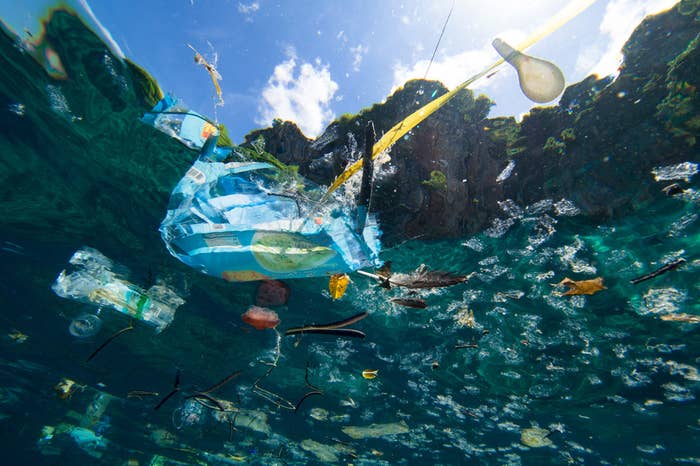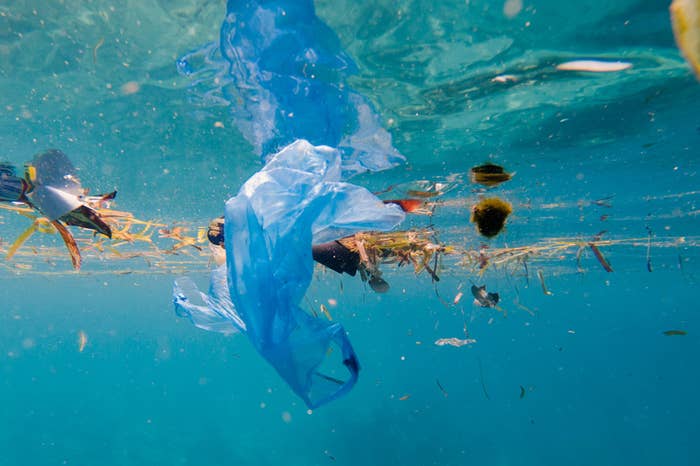
The research on microplastics is intensifying as scientists race to uncover exactly how far they spread around the globe and what effects these tiny plastic fragments are having on ecosystems and the human body.
An October study found microplastics present in over 90% of international table salt brands.
In the same month, a pilot study found microplastics in human stools for the first time, with all eight participants from different nations across the globe testing positive.
Another study published earlier this year observed microplastics in 90% the water of branded water bottles.
Microplastics are tiny fragments of plastic that have been broken apart from larger pieces of weathered plastic; the term includes microbeads from facial cleansers, and fibers from synthetic fabrics.
Studies have indicated that 99% of the plastic that has ever been released into the ocean environment has become microplastic, largely unidentifiable to the naked eye.
The size definition of microplastic ranges from five millimetres to nanoscopic particles.
The issue of tiny, fragmented pieces of plastic worsening pollution were first described in scientific literature by Californian marine biologist Ed Carpenter in 1972. The paper, published in Science, described a mass of tiny weathered pieces of plastic floating on the surface of the North Atlantic Ocean, and Carpenter speculated that increasing the production of plastic would surely lead to an increase of these tiny pieces.
Microplastics are now seemingly ubiquitous in the natural environment. They have been detected in abundance in ocean water, fresh water environments, farming soil, floating around in urban air and arctic air, and frozen into arctic ice.
Dr Paul Harvey, an environmental scientist from Environmental Science Solutions, told BuzzFeed News that the appearance of microplastics in such a vast number of places is comparable to the wide, industrial use of the poisonous metal lead before it was discovered to be contaminating water and soil.
Harvey said that microplastics are so common in the environment, "it seems nothing's safe anymore".
"It worries me in the sense that it's a problem on a massive global scale — and while there are great solutions in place, and there's this massive social movement to reduce plastic, you have this legacy of 30 to 40 years of plastic pollution entering the environment," he said.
The impact of microplastics on the functioning of bodies is still little understood. However research is beginning to indicate that they have may a profound effect on cellular function due to chemical contamination.

When plastics decompose they release chemicals, some of which have toxic effects in living cells.
There are two bodies of thought on the effects of microplastics on organisms: they pass undisturbed through the stomach; or they release chemicals, which are then absorbed into surrounding tissue.
Some studies have shown that ingestion of microplastics has little effect on certain marine creatures such as urchin larva, but there is research to suggest that in species with higher body fat content, fertility, metabolic activity and brain function can be affected. This has been seen in predatory fish that ingest smaller fish with high concentrations of microplastics in their systems.
Harvey said there is increasing scientific evidence for the theory that when microplastics are ingested by animals, those potentially dangerous chemicals are absorbed into the fatty areas of tissue.
This means that microplastics and chemicals they emit as they break down are entering the food chain.
"You wouldn't go to your vegetable garden and pour crude oil all over [it], for example, and then proceed to eat the vegetables," said Harvey.
"But for some funny reason, because we can’t necessarily see the plastics, it’s somehow detached."
This ingestion of microplastics through the food chain was highlighted by a study published in October, which found microplastics, rayon fibres and cotton fibres present in mussels sold in UK supermarkets.
Harvey believes that microplastics could be absorbed into the human body in the same way as polychlorinated biphenyls (PCBs), which were chemicals once widely used as industrial coolants before mass-scale regulation. PCBs were found to be passed through breastfeeding mother's milk, and have been associated with cancer development, damage to the nervous system, cognitive deficits in children and disrupted reproductive function.
While no human trials have been conducted, several studies have indicated that the presence of extremely small microplastic fragments in mammalian blood vessels (specifically, hamsters) can induce blood clots and alter cardiac activity.
Other researchers have said it is simply too early in the research to jump to conclusions about the dangers of microplastics.
Harvey believes plastic production must be stemmed worldwide.
"The EU, for example, have banned single use plastics, so that’s great way to reduce plastic entering into the environment ... if you stop the flow of large plastics then the [creation of] microplastics will eventually stop as well."
